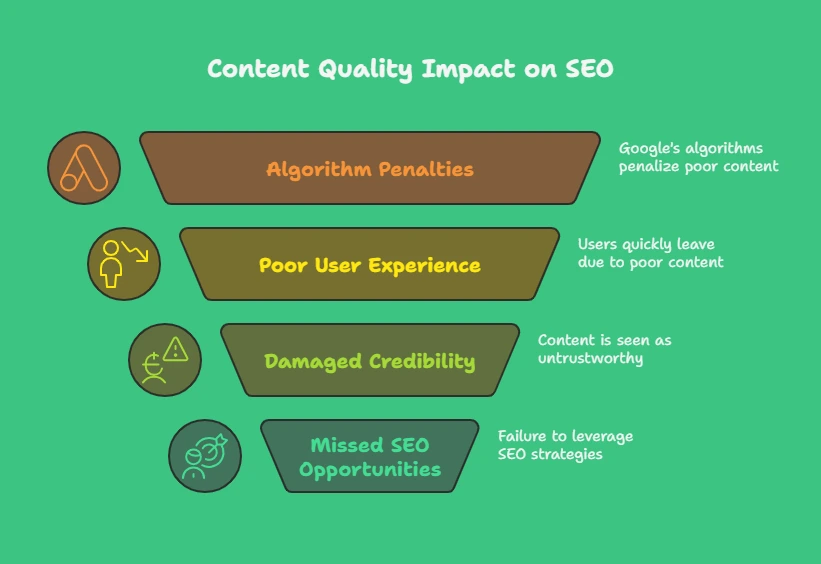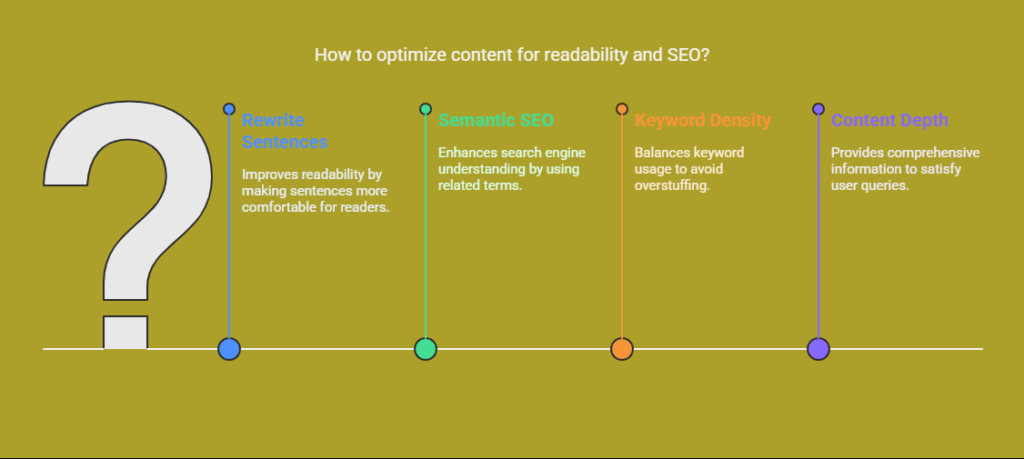
2 Jul 2025
What Is Keyword Stuffing? (And Why It Can Harm Your SEO More Than Help)
Keyword research is the first step to a well-rounded SEO strategy. But when done poorly — especially when overused — it goes from helpful to harmful. Here is where keyword stuffing comes into play.
Now let’s dissect what keyword stuffing is, why it’s done, how to identify it, and most importantly, how to prevent it.
What Is Keyword Stuffing?
Keyword stuffing is when you ‘stuff’ or place the page with the same target keywords in an unnatural manner, desiring the search engines to rate the page higher for that keyword or keyword phrase.
And it did work in the early 2000s. But today? It backfires.
Search engines, particularly Google, are becoming increasingly smarter. Their algorithms value quality, context, and user intent. Keyword stuffing, on the other hand, signals the opposite – poor, deceptive content for bots, not humans.
How Does Keyword Stuffing Appear?
Here’s an example:
“If you want to find the best running shoes, you already own the best running shoes for running, because when it comes to a running shoe, this is the running shoes you make comfortable running shoes for.”
Sounds robotic, right? That’s because of the keyword stuffing.
It often appears as:
- Awkwardly using the same word or phrase in every sentence.
- Putting keywords at the bottom of the page without explanation.
- Placing invisible keywords (white text on white background)
Keyword stuffing with exact-match searches when a more human synonym or alternative phrasing would suffice.
Why People Still Use It
The reason behind keyword stuffing is that people want to rank as high as possible in search engine results for particular keywords. Some content writers are under the impression that if they can include a keyword in a page ten times, that page will be considered more relevant. But in the current SEO world, relevance is about how well you answer a person’s question, not how many times you use the keyword phrase.
Old-school methods may yield short-term traffic, but they also carry the risk of being penalized, which can lead to a low ranking or even deindexing in the long run.
Why Keyword Stuff Hurts Your SEO

1. Search Engine Penalties
Google’s algorithm updates — including Panda, Hummingbird, and more recently, BERT — are designed to identify and penalize low-quality content. If your page is jammed with keywords, it may not only lose rank; it could get wiped from search results entirely. That’s lost visibility, lost traffic, and lost revenue.
2. Poor User Experience
Your readers can tell if the content wasn’t written for them from the get-go. And redundant phrasing and clunky buzzwords can make your writing hard to read. Users bounce fast, and high bounce rates are an unmistakable signal to Google that your content probably isn’t valuable.
3. Damaged Credibility and Authority
Write like a machine, and you break your reader’s trust. It’s hard to be seen as a legitimate source of information when your content sounds like it was auto-generated or designed for robots. That is to say, fewer shares, backlinks, and conversions.
4. Missed SEO Opportunities
Keyword stuffing hurts rather than helps your visibility. Instead of leveraging rich variants like long-tail keywords, related phrases, and topic clusters, you focus on a single term. That dulls your ranking potential for a broader set of searches — and makes your content feel shallow rather than comprehensive.
How to Avoid Keyword Stuffing

1. Use Keywords Naturally
If you find your sentences uncomfortable to read, you should probably rewrite them. Be conscious of your readers’ experience.
2. Aim for Semantic SEO
Google understands context now. Utilize similar terms, synonyms, and human language to expand on your topic.
3. Follow Keyword Density Best Practices
There is no “magic number” for keyword density, but a range of 1%-2% for your main keyword is generally considered safe. More importantly, you should evenly sprinkle it across titles, subheadings, meta headers, and the rest of the content.
4. Focus on Content Depth, Not Just Keywords
Answer user queries thoroughly. Ensure that the subtopics are covered, examples are given, and the article is well-organized. This provides Google with more signals of what your page is about.
Conclusion: Quality Over Quantity
Keyword stuffing is outdated and a waste of time, and actually harms your chances of ranking. The real secret to ranking right now is providing valuable, well-written content that is focused on users and that naturally includes the keywords you are targeting, rather than shoehorning them awkwardly into a post.
Google is not simply looking for keywords; it is trying to determine how helpful your content is for real human beings.
FAQs
1. How can I avoid keyword stuffing?
Prioritize useful, user-friendly material, employ synonyms or related keywords (LSI), and concentrate on natural language.
2. Is there a safe keyword density for SEO?
Although there isn’t a hard-and-fast rule, it’s widely accepted that maintaining a keyword density of 1% to 2% is safe.
3. How do I check if my content is keyword-stuffed?
Check any issues with readability and keyword density using SEO tools like as Ahrefs, SEMrush, or Yoast.
4. What are some examples of keyword stuffing?
Repeating the same phrase unnaturally in titles, meta tags, image alt text, or content without value.
5. What are the best alternatives to keyword stuffing?
Use semantic keywords, optimize for intent, improve content structure, and write naturally for users.
Also Read:- Facebook Ads KPIs Every Marketer Need to Monitor
Leave a Reply
Your email address will not be published. Required fields are marked *












Comments